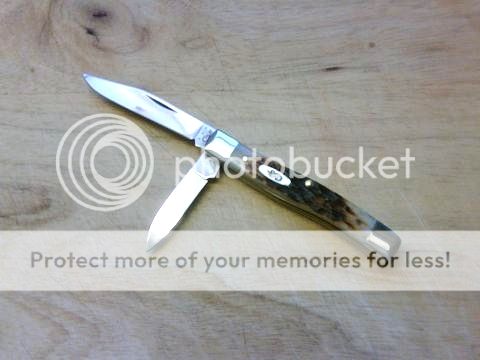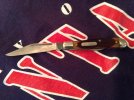- Joined
- Jan 5, 2011
- Messages
- 6,194
I've been thinking about the dogleg pattern recently, and have a few questions that some of you may be able to answer...
Are there or have there ever been any distinguishing differences between a 'dogleg' and 'serpentine' pattern or are the terms synonymous? I'm thinking that a dogleg has two different sized bolsters whereas a sepentine has equal sized ends. Am I on point or out to lunch? Do you think the wavy handle inception came about to better seat a secondary blade on jacks? Better ergos? Design flair? Which pattern emerged first?

GEC #56: Dogleg?

Case Small Texas Jack: Serpentine?
If anyone has any thoughts on the matter, or maybe just want to chat about the good ol' dogleg pattern and/or share some pics, please post up!
Thanks for reading!
-Brett
Are there or have there ever been any distinguishing differences between a 'dogleg' and 'serpentine' pattern or are the terms synonymous? I'm thinking that a dogleg has two different sized bolsters whereas a sepentine has equal sized ends. Am I on point or out to lunch? Do you think the wavy handle inception came about to better seat a secondary blade on jacks? Better ergos? Design flair? Which pattern emerged first?

GEC #56: Dogleg?

Case Small Texas Jack: Serpentine?
If anyone has any thoughts on the matter, or maybe just want to chat about the good ol' dogleg pattern and/or share some pics, please post up!
Thanks for reading!
-Brett





